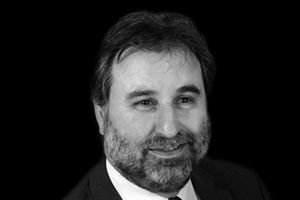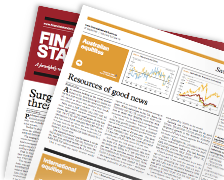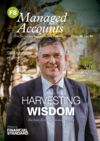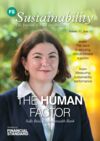Let's talk about Future SuperBY ALEX DUNNIN | MONDAY, 22 FEB 2021 1:05PMThe only thing worse than being talked about is not being talked about. And people sure like talking about Future Super. It's been the target of full-frontal assaults in the business and investment industry media, and just recently, was asked to appear before the parliamentary Standing Committee on Economics. But for all the attention, it's hard to fathom precisely what is the allegation other than Future Super implements its bespoke investment strategy using a custom-built exchange traded fund (ETF). It's pretty easy to see what might be motivating some of the attacks. From a standing start five years ago, by 30 June 2020, its three investment options ranked, after all fees, first, third and forth over one year, and its flagship Balanced Impact investment option ranked tenth over five years. Its flagship balanced option is both Australia's best risk-adjusted balanced fund and best risk-adjusted ESG fund. If it was a MySuper product, it would have been number one in that sector too. Contributions into the fund in 2019-20, according to the superannuation regulator APRA, were up almost 8-fold in four years to $65 million. In 2019-20 its membership growth rate was Australia's third fastest of any fund. And even though it's Australia's 76th biggest fund, its member growth ranked tenth. So Future Super is a fund that plays way above its weight division. But despite this, its funds under management footprint remains tiny. Sure its $550 million under management at June 2020 sounds a lot, but it was only 0.04% of all the superannuation regulated by APRA. Nevertheless, its share of all contributions being almost 3-times its share of all FUM points to where it's heading. And what's happened to the fund in the six months following the close of the 2019-20 financial year bears this out. Latest financial data from Future Super reveals the fund by end December 2020 climbed above the $1 billion threshold. Future Super is thus a serious threat to superannuation's establishment and it's naive to not expect it to be attacked. But if its critics want to land any of their punches they are going to need to do a much better job learning about how the fund works. Future Super uses an ETF to implement its investment strategies for equities and two-thirds of its fixed interest because ETFs are highly efficient; hint, that's the whole point of why ETFs are taking the investment world by storm. Anyway, Future Super's total investment costs at 0.32% are about average for indexed equities strategies. But not all ETFs are passive. Someone should tell the critics that to be an ETF is just a statement about how a fund is distributed; it has nothing at all to do with its investment strategy. Active investment strategy ETFs now account for 8% of ETF funds under management and 18% of the 180 ETFs available in Australia. There are meanwhile no laws about what ETF fees should be and critics need to stop assuming ETFs are automatically passive and cheap. Future Super is simply using ETF structures to house 620 of the securities it invests into, which is why its ETFs were specially built for them. Other investors liked the the concept so much they also joined in, which is why Future Super now accounts for only about one-third of the money in these ETFs. It's also why the fund has 12 investment professionals to monitor the portfolio and ensure the stocks and bonds in it satisfy its screening criteria. It's a fair question why Future Super needs 12, but let's ask other funds why they need even bigger investment teams. Anyway, not all the fund's investments are through the ETFs and part of the job of these investment specialists is, as the members would expect, also monitoring these other investments. Challenging Future Super as to why, as an ethical super fund, it invests into a company like Cleanaway Waste Management, as did the Chair of the Standing Committee on Economics, Tim Wilson MP, is meanwhile not an attack but a compliment. Let's not forget that we can hurl these questions at the fund because it is one of the few that declares its portfolio holdings. Future Super does, however, have a weakness: fees. While its Balanced Index investment choice has total fees of 1.1% pa, placing it in the cheapest third of all balanced products, its flagship Balanced Impact investment option has total fees of 1.7% pa, placing it just within the most expensive third. But the Standing Committee's deputy chair, Andrew Leigh MP, should appreciate that these fees would make Future Super Balanced Index cheaper than 60% of all MySuper products. And of the 52 MySuper products that would be more expensive, 33 of them are industry funds. What then is the lesson here? Easy. Super funds need to get better telling their story and explaining themselves. And critics need to do better research before launching their attacks. |
Latest News
Mega super fund opens first international office
Aware builds property portfolio, adds 726 homes
Actuaries Institute proposes new performance test measure
OneSuper to take on more super products
Cover Story

The super, super fund
CHIEF EXECUTIVE OFFICER
AWARE SUPER
























